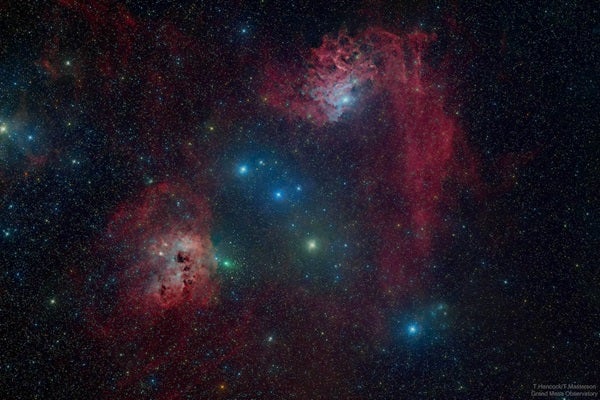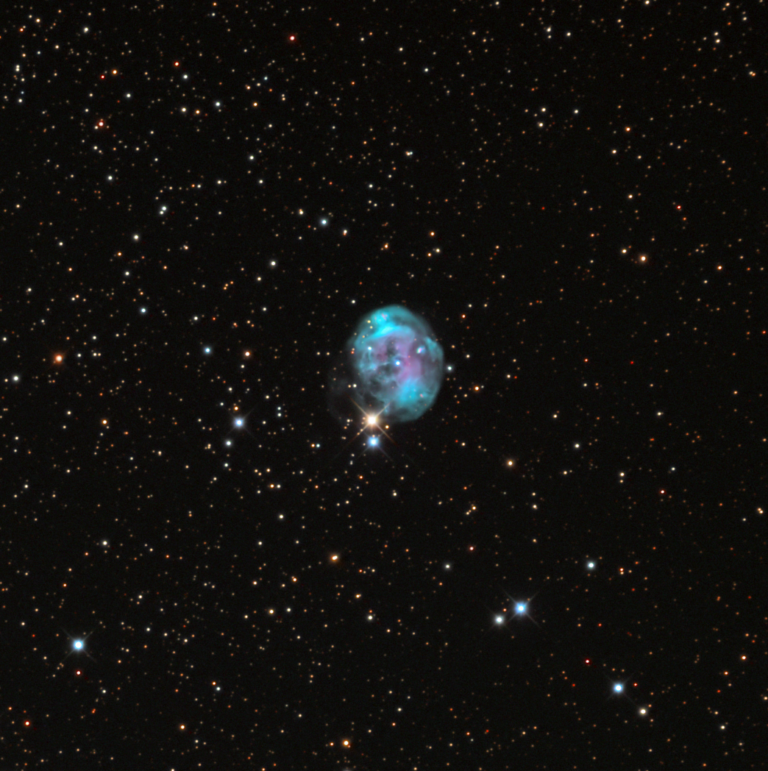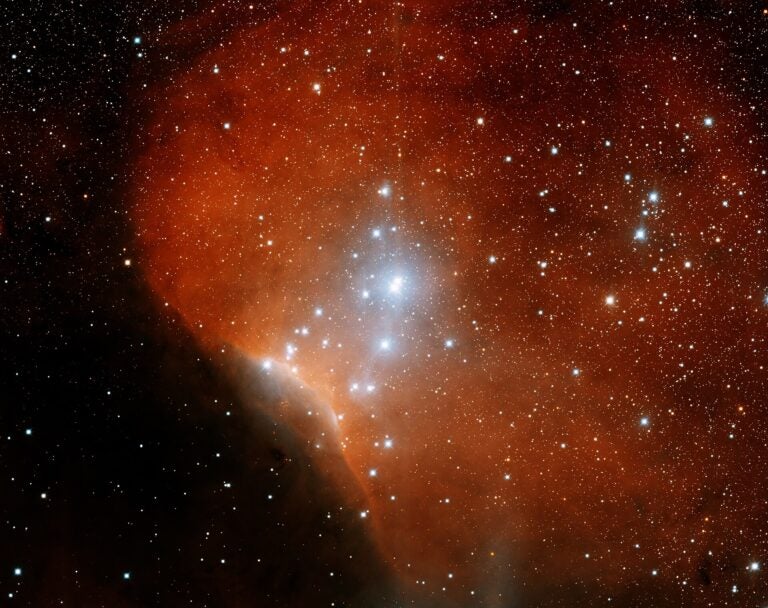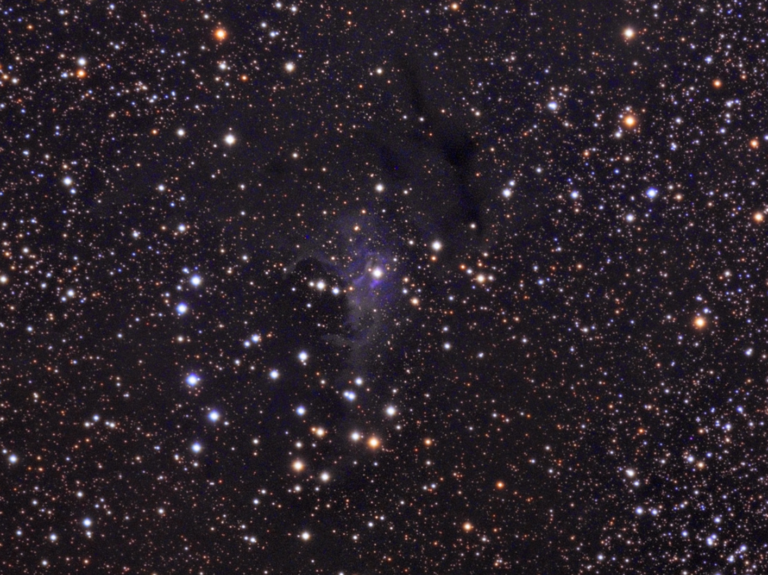John Martin Schaeberle discovered IC 405 near the end of the 19th century. The object was independently spotted shortly after by astrophotographers Max Wolf and Eugen von Gothard. It’s located in Auriga, a constellation better known for its wealth of open clusters, but whose nebulae are often overlooked.
Also known as the Flaming Star Nebula, this object is a combination of emission and reflection nebulae illuminated by the unusual variable star AE Aurigae. The nebula is a large 37′ by 19′ across, and its brightest portion sits east of the star. IC 405 lies 1,500 light-years away.
Many objects with low surface brightness that were discovered via early astrophotography are visible with today’s amateur telescopes, which are often better than those that deep-sky observers in the late 19th and early 20th centuries were using. The Index Catalogue (from which the IC number is derived) description of the Flaming Star Nebula reads, “star of 6.7 magnitude with pretty bright, very large nebula.” With a description like that, you’d think it would be simple to spot. But like many expansive nebulae, it isn’t as easy as it sounds. Under dark, dry skies, IC 405 can be seen with telescopes as small as 2.4 inches. But in less ideal skies, it may be impossible to see, even with larger apertures. Winter nights tend to have lower humidity, so if you enjoy bundling up and observing under frigid temperatures and dark skies, you have a good chance of picking up this nebula.
If you’ve got weird stars on your bucket list, AE Aurigae is another reason to seek out IC 405. This extremely hot O9.5 star varies a modest 0.7 magnitude (from roughly 5.4 to 6.1), but its real claim to fame is its velocity through space. It is one of two stars ejected during a collision of two binary systems about 2 million years ago in the region where the Orion Nebula’s Trapezium now resides. The other is Mu (μ) Columbae. A third star, 53 Arietis, originated in that same region, but was ejected a few million years earlier. AE Aurigae is currently flying by IC 405, illuminating the gas as it goes. Once it passes, the nebula will fade.
Make sure to explore Astronomy’s full list of 101 cosmic objects you must see. New entries will be added each week throughout 2022.
To get the latest astronomical news and observing content delivered directly to your door, subscribe to Astronomy magazine today!










